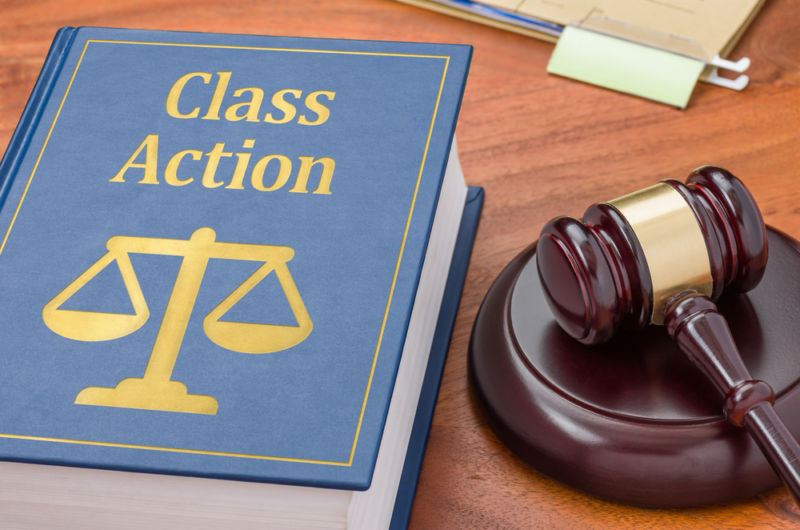Navigating Legal Waters: Recognizing the Ins and Outs of Class Action Lawsuits
Comprehending Class Activity Lawsuit: A Guide for Lawyers
Course action suits have come to be an integral part of the lawful landscape, enabling the debt consolidation of several insurance claims into a solitary activity. For legal representatives, comprehending the complexities of course action lawsuits is essential in successfully representing their customers. This thorough guide checks out the principles of course activity suits, from identifying potential class members to browsing the accreditation procedure. Additionally, it looks into essential methods for handling course action lawsuits and offers insights right into bargaining and obtaining authorization for settlements. By delving right into the complexities of course activity lawsuits, this overview gears up lawyers with the understanding and tools required to successfully browse this complicated location of legislation.
The Essentials of Course Activity Legal Actions
Class activity suits are a legal device used to settle similar cases from a team of individuals into a solitary claim, providing a effective and cost-effective strategy to seeking justice and resolution. This kind of suit allows a representative plaintiff, acting on behalf of the entire course, to bring a claim versus an offender who has presumably triggered injury or breached the legal rights of numerous individuals.
The standard needs for bringing a course activity lawsuit include numerosity, commonality, typicality, and adequacy of representation. Numerosity refers to the fact that the class must be so large that joinder of all members would be impractical. Commonality means that there must be common questions of law or fact that are shared by all participants of the course. Typicality calls for that the cases of the depictive complainant are normal of the insurance claims of the entire class. Lastly, adequacy of depiction makes certain that the depictive complainant will adequately stand for the passions of the whole class.
Course activity suits can be useful for both offenders and plaintiffs. For accuseds, it supplies the opportunity to effectively resolve several insurance claims in a solitary lawsuit, preventing the demand to safeguard against various specific legal actions.
Identifying and Assessing Potential Class Participants
After developing the standard requirements for a class action claim, the following action is to recognize and assess prospective class participants. If they satisfy the essential standards., this procedure entails determining who may be part of the class and assessing their cases to determine.
To recognize possible class participants, lawyers typically carry out extensive research study and collect appropriate info. This may involve evaluating files, conducting interviews, and examining documents to recognize people or entities that may have been impacted by the alleged wrongdoing. It is crucial to develop a thorough and clear checklist of prospective class members to make certain that all influenced celebrations are included in the lawsuit.
When potential course members have actually been determined, the next action is to evaluate their claims. This entails examining the benefits of each specific claim to establish if they satisfy the lawful demands for course accreditation. Attorneys must very carefully analyze the truths, evidence, and legal theories of each possible class member's case to ensure that they have a feasible instance.
Evaluating prospective course members likewise entails determining whether they satisfy the course interpretation and have actually endured comparable harm as a result of the defendant's activities. This needs comparing the facts and situations of each prospective course participant's situation to the allegations and legal theories placed forth in the legal action.
Navigating the Class Accreditation Refine
To efficiently browse the course qualification process, lawyers need to carefully abide by the step-by-step needs stated by the court. Course certification is a vital action in a course action claim, as it figures out whether an instance can continue as a course action, representing a group of individuals who have similar claims against an offender. sites The procedure entails pleasing certain standards, such as numerosity, commonness, typicality, and adequacy of representation.
To start with, lawyers must develop numerosity by showing that the course is so huge that individual joinder is not practical. This needs an extensive analysis of the defenses and insurance claims entailed.
Following, attorneys should show typicality, which implies that the depictive plaintiff's cases are normal of the claims of the course members. This makes certain that the rate of interests of the click here to find out more representative plaintiff straighten with the rate of interests of the course. Finally, lawyers need to show adequacy of depiction, meaning that the depictive plaintiff and their advice will fairly and adequately represent the passions of the class.
To navigate this procedure effectively, legal representatives should extensively prepare by conducting substantial study, gathering evidence, and establishing an engaging debate that satisfies each of these criteria. They need to additionally be prepared to respond to any type of challenges or arguments raised by the defendant. By carefully adhering to the procedural needs established forth by the court, lawyers can raise their opportunities of acquiring class accreditation and progressing the passions of the course participants.

Trick Methods for Taking Care Of Class Activity Lawsuits
Upon successfully browsing the course certification process, legal representatives must then carry out key methods for effectively managing class activity lawsuits. These strategies are important to make certain that the case proceeds smoothly and effectively, eventually maximizing the possibilities of a desirable end result for the course members.
One secret method is to develop a solid and natural legal team (Class action lawsuit). This includes constructing a team of lawyers with knowledge in class action litigation, in addition to various other pertinent areas such as the particular market or subject associated with the instance. A versatile group can bring different point of views and abilities to the table, boosting the general efficiency of the litigation
One more essential technique is to develop a extensive and well-thought-out lawsuits strategy. This plan ought to outline the overall goals of the case, as well as the specific legal concepts and disagreements that will be pursued. It ought to additionally consist of a timeline and budget plan to make sure that the case stays on track and within the assigned sources.
Furthermore, lawyers need to proactively engage with the course members throughout the lawsuits procedure (Class action lawsuit). This includes giving routine updates on the progress of the instance, seeking input and responses from the class participants, and attending to any questions or concerns more tips here they may have. By promoting open interaction and collaboration, attorneys can develop depend on and assistance amongst the class members, which can be crucial in attaining a successful resolution
Resolving Class Activity Suits: Settlement and Approval
When it comes to resolving course activity suits, efficient settlement and obtaining authorization are essential action in attaining a resolution. Course action lawsuits are complex and include a a great deal of complainants, making it crucial to reach a settlement that is satisfying and reasonable to all parties entailed.

As soon as a negotiation agreement is reached, it should be approved by the court. The court's function in this process is to make certain that the settlement is reasonable, affordable, and sufficiently safeguards the interests of the course participants. The court will take into consideration variables such as the nature of the insurance claims, the strength of the proof, the prospective recuperation for the class participants, and any kind of arguments elevated by course members.
Obtaining court authorization is important as it supplies finality to the settlement and safeguards the interests of the course participants. It makes certain that the settlement is binding and enforceable, and course participants can get their rightful compensation.
Conclusion
Class action lawsuits have actually become an integral part of the lawful landscape, allowing for the combination of numerous insurance claims right into a single action. Course accreditation is a vital action in a course activity claim, as it establishes whether an instance can proceed as a class action, representing a group of individuals that have comparable insurance claims versus an offender. By vigilantly sticking to the step-by-step demands set forth by the court, lawyers can increase their chances of acquiring course accreditation and progressing the passions of the course participants.
The court will think about variables such as the nature of the insurance claims, the toughness of the evidence, the prospective recovery for the course members, and any kind of objections increased by course participants.
By determining and assessing possible class participants, lawyers can establish the viability of a class action legal action.